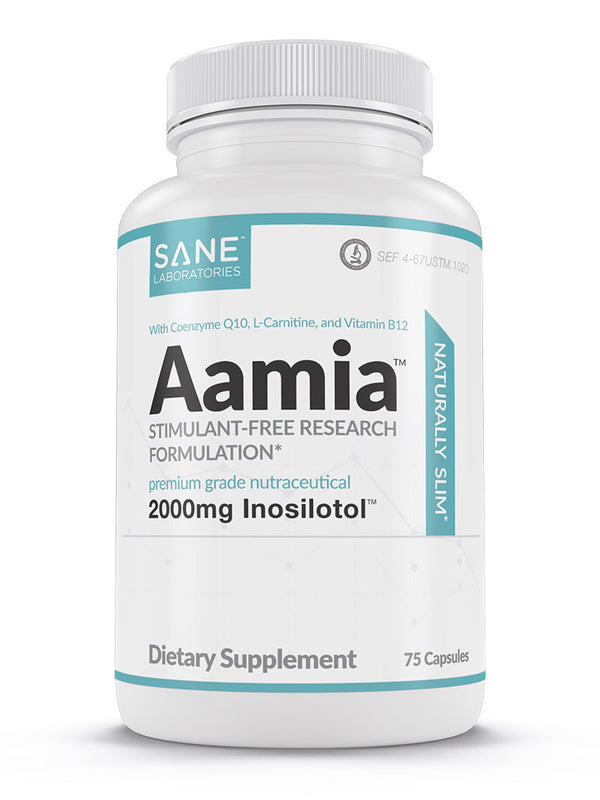Feeling that persistent tickle in the throat or the nagging sense of mucus that won’t clear up? How about a sore throat and runny nose that are so common with postnasal drip? You're not alone.
Click here to learn more about Vitaae™ and to place your order now while supplies last!
Many people experience the discomfort of throat phlegm and mucus, a common symptom that can arise from a variety of underlying causes.
Phlegm and mucus are not just annoyances; they are essential to the body’s defense mechanisms.
Produced by the mucous membranes lining the respiratory tract, these slippery secretions trap and eliminate invaders like bacteria and viruses before they can cause harm.
But when there's too much of it or it becomes too thick to clear quickly, discomfort sets in, prompting a cough or the urge to clear your throat repeatedly.
Why does throat phlegm and mucus happen?
Several factors can contribute to the overproduction or thickening of mucus. Allergies, colds, flu, sinus infections, and even weather changes can increase mucus production. Lifestyle factors like dehydration or consuming certain foods might also play a role.
For those looking for relief, it’s not just about treating the symptoms. Understanding the root causes and how to address them naturally can be a game-changer. In the extended article, we explore natural ways to effectively manage and reduce throat phlegm and mucus.
These methods aim not only to alleviate symptoms but also to support the body’s overall health and well-being.
So, if you or someone you know is grappling with this sticky issue, why not share this insightful guide? It might provide the relief and answers needed to clear up more than just throat phlegm and mucus!
Lifestyle Adjustments for Reducing Throat Phlegm and Mucus
Managing the discomfort of excess throat phlegm and mucus goes beyond just medications and home remedies. It often requires a shift in our daily routines and environments. The good news is that several non-dietary and non-exercise-related lifestyle adjustments can make a significant difference.
Here are some practical changes that can help minimize mucus production and enhance your comfort, ensuring that your body's natural defenses don't make you feel unnecessarily bogged down.
1. Hydration
While it might seem simple, maintaining optimal hydration is a cornerstone of mucus management. Drinking plenty of fluids helps thin the mucus, making it easier to expel.
Water is your best choice, as it directly contributes to the body's balance and mucus production without adding any irritants.
2. Humidity Control
Dry air can exacerbate mucus production as your body tries to combat the dryness by secreting more mucus. Using a humidifier in your home, especially during dry months or in arid climates, can help maintain a healthy humidity level and relieve symptoms.
This not only soothes irritated tissues in the throat and nasal passages but also helps keep mucus thin.
3. Air Quality
Improving the air quality inside your home can reduce irritants that trigger mucus production. Consider using high-efficiency particulate air (HEPA) filters to remove particles like pollen, pet dander, and dust mites from your environment.
Additionally, avoid smoking and exposure to secondhand smoke, as tobacco smoke is a significant irritant to the respiratory tract.
4. Sleep Posture
Adjusting how you sleep can influence mucus accumulation overnight. Sleeping with your head elevated can prevent mucus from pooling in your throat, often leading to that unpleasant, congested feeling in the morning.
For better drainage during the night, use an extra pillow or raise the head of your bed.
5. Clothing Choices
What you wear can also impact your respiratory health, especially during colder months. Ensure you are warmly dressed to avoid cold-induced mucus overproduction, which is your body's way of protecting your respiratory tract from the cold air.
Scarves can be particularly effective, as they keep the neck warm and help warm the air before it is inhaled.
These lifestyle adjustments are practical and within reach for most people. They do not require drastic changes but can significantly improve your quality of life by managing the production and presence of throat phlegm and mucus.
Implementing these changes can lead to clearer breathing and less discomfort without constant medical intervention.
Dietary Adjustments to Reduce Throat Phlegm and Mucus
Addressing throat phlegm and mucus isn't just about what medications you can take; it's also about what you eat. The right dietary choices can help manage excess mucus or phlegm mucus and reduce mucus production, easing discomfort and improving respiratory health.
Here are some thoughtful changes you can incorporate into your daily meals that may help you decrease the buildup of unwanted mucus, focusing purely on what you consume.
1. Increase Fluid Intake
Increasing your fluid intake can help thin the mucus, making it easier for your body to expel. Water is ideal, but you can also include herbal teas and broths in your diet.
Avoid beverages that can dehydrate the body, such as coffee and alcohol, as they may thicken mucus.
2. Opt for Warm, Cooked Foods
Warm, cooked foods can be soothing for those dealing with excessive mucus. Foods like soups, stews, and steamed vegetables are not only comforting but also easier to digest.
This can help reduce the load on your digestive system, indirectly helping to regulate mucus production.
3. Incorporate Anti-Inflammatory Foods
Incorporating anti-inflammatory foods into your diet can help manage the inflammation that often accompanies excessive mucus production. Foods rich in omega-3 fatty acids, such as flaxseeds, walnuts, and fatty fish like salmon, are excellent choices.
Fruits and vegetables rich in antioxidants, such as berries, leafy greens, and peppers, also support the immune system and reduce inflammation.
4. Reduce Dairy Consumption
For some people, dairy products can exacerbate mucus production. If you notice an increase in phlegm after consuming milk, cheese, or yogurt, consider reducing your intake to see if symptoms improve.
You can substitute these with non-dairy alternatives like almond milk, coconut yogurt, or cashew cheese.
5. Avoid Foods That Trigger Mucus
Certain foods can trigger or worsen mucus production in some individuals. Common culprits include processed foods, sugary snacks, and fried foods.
Reducing your intake of these foods can help minimize mucus production and also contribute to overall health.
6. Spicy Foods
Interestingly, spicy foods can sometimes help reduce mucus thickness and congestion. Ingredients like chili peppers contain capsaicin, which can thin mucus and stimulate its clearance from the body.
However, monitor your response; some people may find spicy foods irritate the throat.
These dietary guidelines are designed to assist in managing and reducing mucus production through everyday meals.
Adapting what you eat can relieve and support your body’s natural ability to clear mucus, enhancing your comfort and respiratory health.
Activity and Exercise Modifications to Alleviate Throat Phlegm and Mucus
Engaging in physical activities is not just about fitness and weight management; it can also play a crucial role in managing respiratory conditions, including the production of excess mucus and phlegm. Selecting the right types of exercises and adjusting your activity routine can significantly improve the management of mucus production, facilitate easier breathing, and reduce discomfort.
Here are four activity-related changes that can help manage and reduce throat phlegm and mucus.
1. Gentle Cardiovascular Exercises
Activities like walking, light jogging, or cycling at a moderate pace can help improve lung capacity and the efficiency of the respiratory system. This type of gentle cardiovascular exercise encourages deeper breathing, which helps to loosen and clear mucus from the air passages.
Aim for a steady, manageable pace that allows you to breathe comfortably while moving.
2. Breathing Exercises
Incorporating breathing exercises into your daily routine can significantly benefit lung function and mucus clearance. Techniques such as diaphragmatic breathing, which emphasizes full lung expansion and active exhalation, can help clear mucus and strengthen respiratory muscles.
Practicing these exercises for a few minutes several times a day can provide noticeable benefits.
3. Postural Exercises
Specific exercises can improve your posture, which in turn can help optimize lung capacity and mucus clearance. Activities like yoga, Pilates, or tai chi focus on alignment and balance, encouraging better posture.
Improved chest expansion and breathing deeply are critical to managing respiratory mucus.
4. Use of Steam During Exercise
Incorporating steam into your exercise routine can help loosen mucus while you exercise. For instance, performing light exercises in a steamy room or walking briskly in a warm, humid environment can help.
The warm moisture helps hydrate the airways and loosen the mucus, making it easier to expel.
These activity-related strategies aim to enhance respiratory health and facilitate the management of throat phlegm and mucus. By adjusting your exercise routines and incorporating specific respiratory-friendly practices, you can achieve greater comfort and improve your overall respiratory function.
Frequently Asked Questions About Phlegm and Mucus
1. What is the difference between phlegm and mucus?
Although often used interchangeably, phlegm and mucus serve slightly different functions. Mucus is a gel-like substance produced by mucous membranes in various parts of the body, including the nose, throat, and lungs. It traps dust, microbes, and other particles.
Excess phlegm, however, specifically refers to the thick mucus expelled from the respiratory tract through coughing. It often contains viruses, bacteria, or other debris when you are sick.
2. Why do we produce more mucus when we are sick?
Increased mucus production is a defense mechanism for the body when fighting off infections like colds or the flu. An upper respiratory infection, acid reflux, a viral infection, a bacterial infection, lung diseases, cystic fibrosis, a sinus infection, a fungal infection, and other conditions can cause excess mucus production. The body produces more mucus to trap and eliminate microbes and other foreign particles.
This excess mucus can also contain antibodies and other immune cells to help combat the infection, making the mucus thicker and more noticeable.
3. Is it normal to always have a little phlegm or mucus?
Yes, it is perfectly normal to consistently have a small amount of mucus in your throat and respiratory system. Mucus plays a critical role in maintaining healthy tissues and protecting them from irritation and infection by trapping unwanted substances.
However, noticing an increase in the amount or a change in the color or consistency of the mucus might indicate an underlying condition that could require attention.
4. What does the color of my phlegm indicate about my health?
Colored mucus can sometimes provide insights into your health. Clear mucus is normal and healthy. Yellow or green mucus can indicate an infection, such as a cold or a bacterial infection.
Brown or gray mucus could suggest your body is expelling pollutants or smoke. Blood-streaked or pink mucus could be a sign of a more severe condition, such as bleeding within the respiratory system, and should prompt a visit to a healthcare provider.
5. How can I safely reduce mucus and phlegm production?
To safely reduce mucus and phlegm, stay hydrated to help thin the mucus, making it easier to expel. Avoid irritants such as tobacco smoke and other pollutants, which can increase mucus production. Incorporating gentle exercise into your routine can also help manage mucus, as can using a humidifier in your home to keep the air moist.
If excessive mucus production is a frequent problem, consider consulting with a healthcare provider to explore possible underlying causes.
Discover Clearer Breathing: Share the Knowledge
Thank you for exploring the nuances of managing throat phlegm and mucus with us. Understanding and adjusting your lifestyle, diet, and activity levels can significantly improve your respiratory health.
If you found these insights helpful, consider sharing this guide with friends and family via social media or email. Spreading knowledge can empower others to breathe easier and live more comfortably. Join us in promoting healthier living with just a few clicks—your support can make a big difference in someone’s quality of life.
Share today and help others feel their best!
SANE Vitaae™: The Natural Way to Reduce Excess Mucus Production
SANE Vitaae™ is the wildly popular breakthrough solution you’ve been looking for to eliminate that excess mucus in your throat. Vitaae™ is a patented brain-boosting clinical formula with natural nutrients shown to reduce brain inflammation, which can help stop your body from making too much mucus.
The result can be less postnatal drip and chronic throat clearing. Better still, Vitaae™ contains the most absorbable forms and therapeutic doses of the nutrients needed to soothe brain inflammation -- all in one convenient capsule -- making it easy for you to get the ESSENTIAL nutrients for your brain to stay healthy and sharp as you age…and stop your body from making too much mucus at the same time!
And the easy-to-swallow capsules make it EASY to take, too!
Click here to learn more about Vitaae™ and to place your order now while supplies last!
































